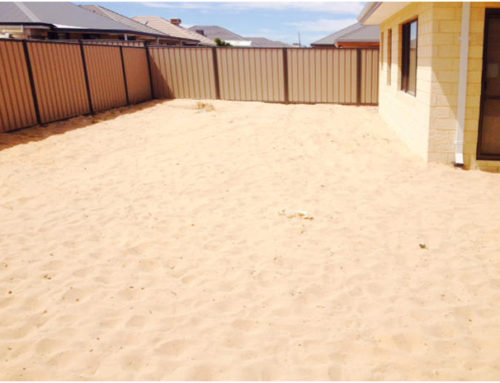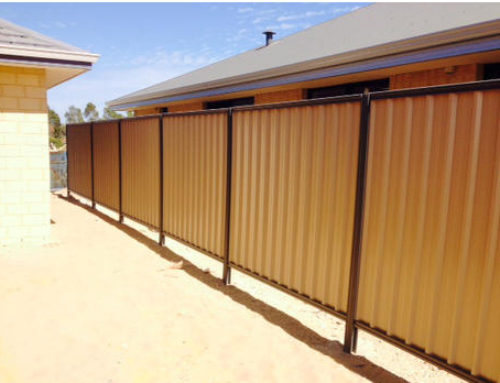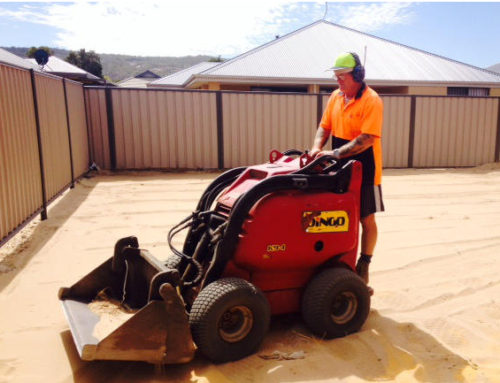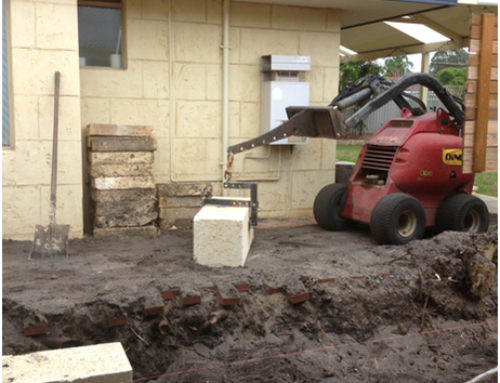A common question we are asked is why can’t the fence just slot into the same spot you have removed it from? The answer is detailed, as each Hardie fence and colourbond fence install has its own problems to overcome.
In theory if you were to remove a fence on a flat surface with nothing either side then this would be achievable. Unfortunately this is almost never the case as a Hardie fence, super six fence or asbestos fence that has been installed years and in some cases decades earlier is often subjected to build up of soil or landscaped structures close to the fence line. Commonly people tend to use the space right up to the fence line, and with narrow sections down the side of most suburban blocks, it is often landscaped with concrete, pavers or garden build up.

Above: An example of landscaping built up against an existing Hardie fence.
In some cases it is other trades people who have built structures close to a fence line without assessing to see if the landscape has been sufficiently retained to accommodate the Hardie fence or Colorbond fence. As it is not their problem at the time, the owner will only have the issue when the fence goes over and, at this point, it will be exposed as to the poor foundations it was built upon with all weight bearing on the fence.
This means all the paving, garden, or new concrete (liquid limestone) will have to be taken back to an acceptable distance away from the fence and then a retaining wall must be built to accommodate. As this is an existing problem, the owner is faced with the previous trades-person’s error in not taking the correct steps in the event the fence goes over, undoing all his hard work that usually by this point has been paid for and completed sometime before.
Another common reason for why the new Colorbond fence or Hardie fence cannot accommodate the existing landscape and structures is that over time people will build structures to a fence line that has moved over, or as we say in the trade, no longer plumb.
As an example, commonly a side access gate will be built and even installed to a lean as to accommodate the gap that will remain. When the fence goes down, a new fence is to be erected in a plumb position, and the existing post will be falling onto the fence line. It must be removed and re-installed. This is additional work to just erecting a new colorbond fence or hardie fence. It is then accommodating structures that were previously installed to the old fence line.
Another common problem is that when you join a fence to an existing fence that is not plumb, you are either going to install the new fence on an angle, which is not recommended, or align the old fence, which may be cheaper, pending on the length, just to remove and start again. It is always advised to ask a Perth Trade Centre tradesman what he can see will be the issue and then go from there.
It is very hard to anticipate every scenario but as a rule with existing fence lines, you should expect that the new fence installation will possibly face some issues in accommodating existing conditions, some of which may have attributed to the destruction of the old fence.
We as tradesman don’t go out of our way to create problems that don’t exist, but with fencing to existing fence lines we are often faced with little surprises that previous people have left for us to fix up.





